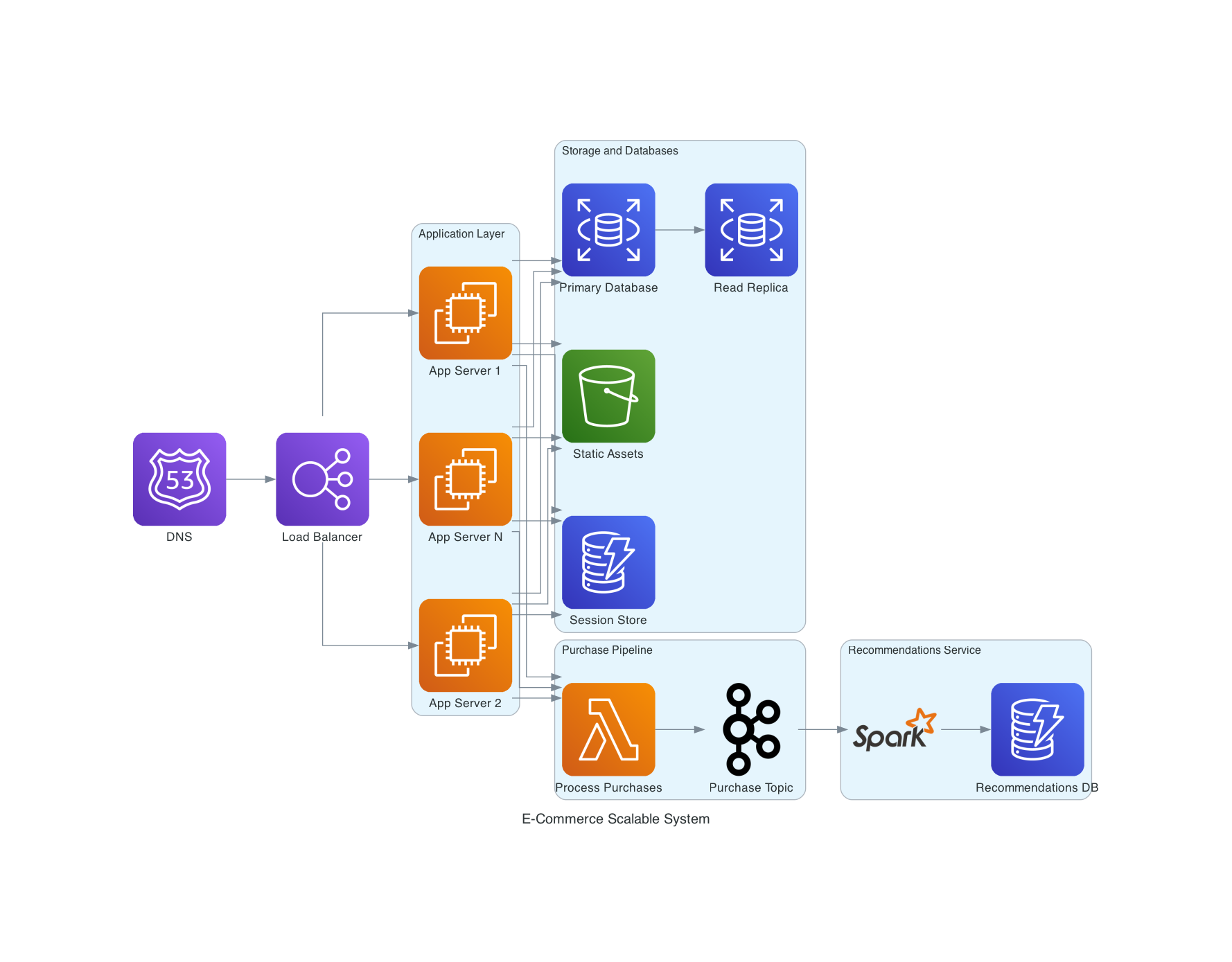Best Distributed Caching Technologies for Architecting High-Performance Systems
One of the biggest difficulties in modern large-scale systems is the ever-growing volume of data and user interactions.
Companies are expected to grow but maintain the same high performance and responsiveness while keeping infrastructure costs within budget.
This makes the job of software architects and developers more challenging every day as they need to develop clever ways to reduce latency and optimize their code.
One of the main performance bottlenecks for any system remains its data layer, aka its database. No matter how fast your code or runtime is, a slow database query can easily diminish all your effects.
Caching is a powerful solution for optimizing the performance of large-scale systems.
In this article, you’re going to learn about the top distributed caching technologies for architecting high-performance, large-scale systems.
If you are a software architect or a developer working on highly scalable, data-intensive applications, this article is for you.
Distributed caching is also a common topic in System Design interviews, so make sure you’re at least familiar with the following technologies.
1. Redis
By far, the most popular and used caching technology is Redis.
Redis is open-source, which makes it an attractive solution for any budget. It is written in C/C++, which provides very high and consistent performance.
It also offers a very easy-to-use Cli, which is perfect for prototyping before writing any code.
Integrating Redis into your application couldn’t be easier since there are dozens of client libraries (official and non-official) in almost every programming language.
Redis is much more than an in-memory key/value store.
It supports many data types and structures like Strings, Lists, Sets, Hashes, Sorted sets, Streams, Geospatial indexes, Bitmaps, Bitfields, and more.
When deployed as a cluster, Redis also supports sharding and re-partitioning for maximum horizontal scalability and replication for high availability.
It is the perfect technology for use cases like:
Real-time applications that require low latency and high-throughput
Storing session information to reduce database queries
Eliminating expensive computations and network calls in a Microservices Architecture.
Redis is also available as a cloud-managed solution by the top cloud vendors:
Becoming a software architect and technology leader is the ultimate goal for every software engineer. But you don’t need to wait for it to happen sometime in the far future!
In this guide, I share with you the 5 proven steps to becoming a software architect and technology leader today.
Use this free PDF guide to pave your path to success. Your biggest career breakthrough as an engineer is closer than you think.
2. Memcached
Memcached is a free, open-source, high-performance distributed object caching system. While Memcached is generic in nature, its primary use case is to accelerate dynamic websites by caching objects in RAM.
Just like Redis, it comes with a very powerful command line Cli which makes it super easy to query and store for rapid prototyping.
However, Memcached doesn’t support any advanced data structures, and it’s primarily a key/value store for getting and putting simple data.
This limitation also makes its API very simple and easy to use, and more importantly, provides blazingly fast performance where each operation is of O(1) time complexity, typically well under 1ms.
Memcached is made up of 3 components:
Client software that maintains the list of Memcached services.
A client-based hashing algorithm that decides which key goes to which service
A server, running Memcached and stores the keys and their values
Memcached is using the LRU (Least-Recently Used) cache invalidation strategy by default, where items can also expire after a set amount of time.
Just like Redis, Memcached is offered as a cloud-managed solution by the top cloud vendors:
3. Aerospike
Aerospike is a distributed, open-source, NoSQL database written in C++, architected with 3 key objectives:
Creating a high-performance, scalable solution that meets the requirements of today’s web-scale applications
Providing robustness and reliability like ACID guarantees.
Offering operational efficiency with minimal manual involvement - A key feature for DevOps, SREs, and software developers alike
Aerospike supports a variety of client libraries for many programming languages like Java, C#, C, Go, Node.js, Ruby, and Python, as well as many other community-supported clients for Rust, PHP, and others.
Aerospike also provides a RESTful API is a great feature for today’s web-based applications.
What really sets Aerospike apart is it provides automatic sharding and strong consistency while still offering low latency and high throughput.
This makes it a perfect choice for real-time analytics and caching data that requires strong consistency like distributed “counters.”
4. Hazelcast
Hazelcast is another in-memory distributed caching solution.
Just like Redis, it supports a variety of data structures like Map, Set, List, MultiMap, RingBuffer, and HyperLogLog.
Hazecast also supports many programming languages like Java, .NET, C++, Node.js, Python and Go.
However, unlike the previous options is typically used as a data grid.
That means you can use Hazelcast as a Distributed Map, where one application instance can make a complex computation, store it within Hazecast, and Hazecast will automatically replicate that data across the entire cluster.
All the data is stored in memory, which makes requests to that data super fast.
In terms of the Cap theorem, Hazelcast can be configured as an AP (Available, Partition tolerant) system as well as a CP (Consistent, Partition Tolerant) system, which makes it super robust for a variety to use cases.
The main benefit of using Hazelcast over all the previously mentioned solutions is its caching pattern is a lot simpler and cleaner.
With all the previously mentioned solutions, if you have a cache miss, it is the developer’s responsibility to implement a call to the source database to get the data and then update the cache.
Similarly, when the data in the source database is updated, it is the developer’s responsibility to write code to propagate that update to the cache.
When using Hazecast, the developer doesn’t need to worry about keeping the source database and the cache in sync. It is done automatically.
Another benefit is Hazecast offers the ability to query data in a SQL-like language, which is intuitive for applications that use a SQL database as a main storage engine.
So which solution should I use?
As with everything in software architecture and system design, it’s always a trade-off.
The best solution always depends on the context and requirements of your system. However, to make the right tradeoffs, you need to have solid software architecture foundations and follow a consistent step-by-step system design process. Without this process, you might make costly mistakes that require a major refactor down the line.
If you are an existing or aspiring software architect looking to solidify your software architecture skills, Top Developer Academy has you covered.
Explore the highest-rated and most comprehensive Software Architecture and System Design courses that give you the career boost you’ve been looking for.
Not ready for a course? Download the free Ebook on The 5 Proven Steps to Becoming a Software Architect and technology leader.
Becoming a software architect and technology leader is the ultimate goal for every software engineer. But you don’t need to wait for it to happen sometime in the far future!
In this guide, I share with you the 5 proven steps to becoming a software architect and technology leader today.
Use this free PDF guide to pave your path to success. Your biggest career breakthrough as an engineer is closer than you think.

























If you’re an experienced software developer and want to take your career to the next level, becoming a software architect is a natural and rewarding next step.
Becoming a software architect and technical lead not only helps you grow your career and increase your impact, but also future-proofs your career against the threat of AI.
In this guide, I’ll walk you through the skills, mindset, and steps needed to transition into a software architect role.